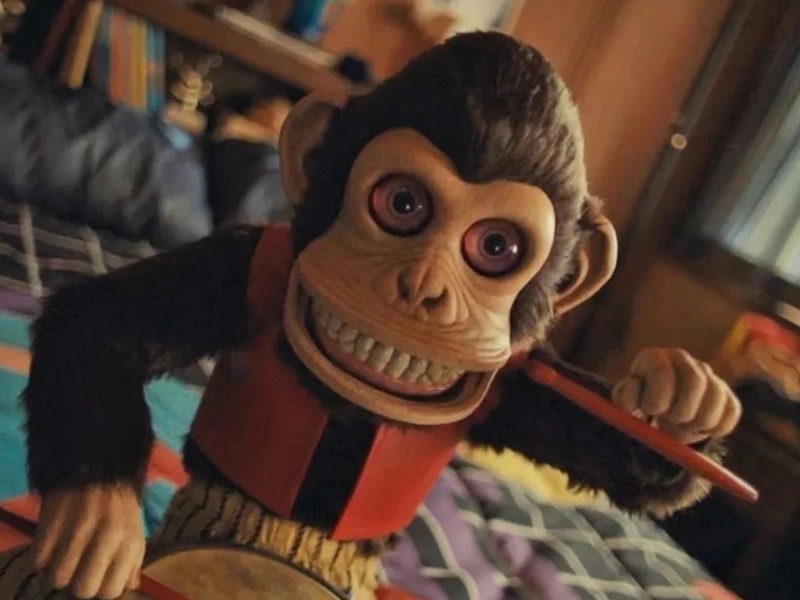Horror filmmaker Osgood Perkins returns with The Monkey (2025), a chilling adaptation of Stephen King’s short story from his 1985 collection Skeleton Crew. Produced by James Wan and Jason Blum, this film combines dark psychological tension with supernatural terror — proving that even the simplest toys can harbor pure evil.
Overview and Plot Summary
The Monkey revolves around twin brothers Hal and Bill as they uncover a strange mechanical cymbal-banging monkey from their childhood. As kids, they linked it to a series of gruesome deaths — each time the toy clapped its cymbals, someone close to them would die. Years later, when Hal discovers the old toy again, a new chain of tragedies begins, pushing both brothers to confront their buried fears and uncover the monkey’s sinister origins.
The story shifts between past and present timelines. The youthful sequences highlight the innocence of the brothers before being corrupted by the monkey’s curse, while the adult timeline exposes their psychological scars as they try to separate coincidence from supernatural truth.
Performances and Direction
Theo James delivers a grounded and emotionally intense performance as Hal, portraying a man unraveling between guilt and terror. Elijah Wood’s portrayal of Bill brings a quietly desperate energy, balancing brotherly affection with underlying dread.
Perkins’s direction emphasizes tension through atmosphere rather than jump scares. He continues his signature slow-burn style seen in The Blackcoat’s Daughter and Gretel & Hansel — building unease with dimly lit spaces, ticking clocks, and that unnerving monkey toy. The cinematography by Julie Kirkwood embraces shadow and color contrast to amplify the unease, transforming ordinary hallways and childhood bedrooms into spaces of lurking menace.
Themes and Symbolism
At its heart, The Monkey examines guilt, family bonds, and the haunting nature of repressed trauma. The cursed toy acts as a metaphor for unresolved childhood fears—the parts of ourselves we thought we outgrew but that silently shape our adult lives. Perkins invites viewers to consider whether the evil lies within the mechanical toy or within our own compulsion to assign meaning to tragedy.
There’s also a clear meditation on fate and inevitability. The repetitive clatter of the monkey’s cymbals mirrors the inescapable cycles of fear, grief, and death — as if every clang propels destiny forward.
Ending Explained
Without spoiling too much, the third act ties the supernatural horror to the emotional connection between the brothers. The monkey’s destruction becomes symbolic — not just of breaking the curse but of confronting the past head-on. However, the ending is left ambiguous enough for viewers to wonder whether the evil truly perished or if it merely passed into something else, waiting to awaken again.
Perkins’s subtle choice to close on lingering silence instead of spectacle reinforces the film’s psychological horror sensibility. It’s less about what you see and more about what you can’t forget.
Final Verdict
The Monkey (2025) is a haunting, slow-building horror film that thrives on atmosphere and emotional depth rather than gore. Fans of Stephen King adaptations like 1408 or The Boogeyman will appreciate the tone, but Osgood Perkins adds his uniquely poetic approach to dread.
For those seeking an intelligent, unnervingly quiet horror with psychological weight — The Monkey delivers.
Rating: (3/5)
